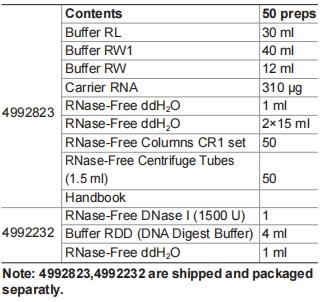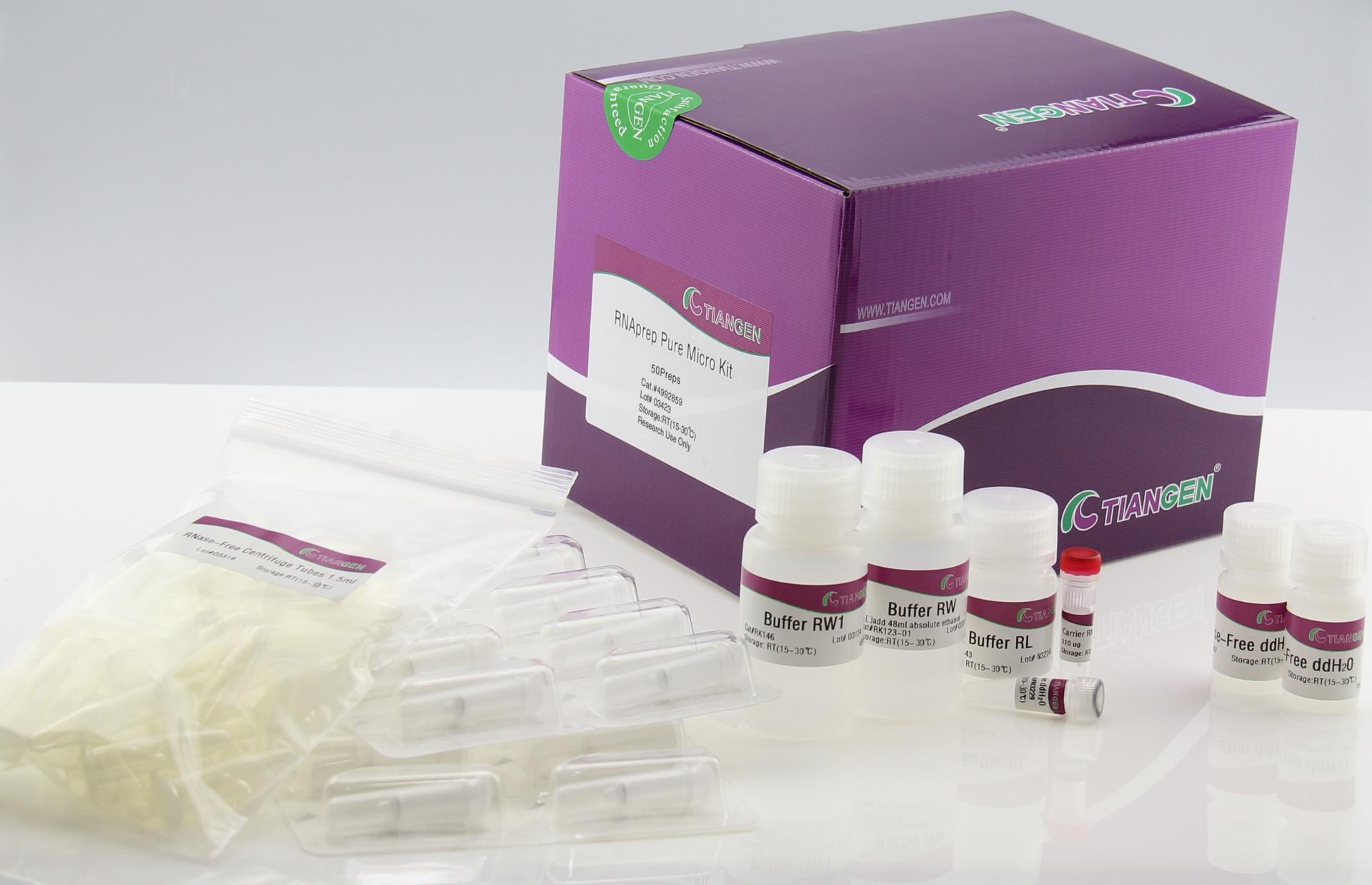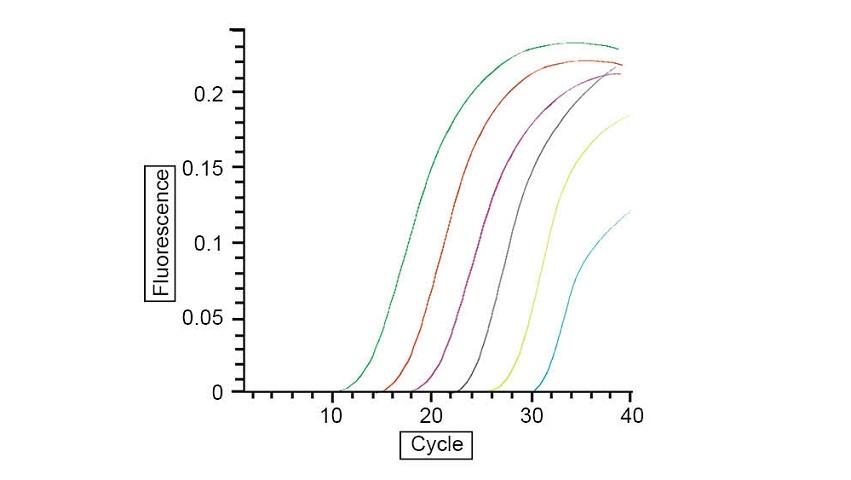Catalog Number|Packaging
Mat. No |
Ref. No |
No. of preps |
|
4992859 |
Gdp420 | 50 |
-
Features
● Capable of purifying high quality RNA from trace amount samples, such as micro-dissected tissue, fibrous tissue and cells.
● Unique DNase I minimizes genomic DNA contamination.
● The high-purity and ready-to-use RNA is suitable for sensitive downstream applications.
● No phenol/chloroform extraction, no LiCl and ethanol precipitation, no CsCl gradient centrifugation are needed, which makes the process safe and reliable.
-
Description
The RNAprep Pure Micro Kit uses a highly efficient, nucleic acid-specific centrifugal adsorption column and a unique buffer system to rapidly extract total RNA from a wide range of different types of microsamples.This kit includes Carrier RNA, which can easily capture trace nucleic acids from the system. The extraction of RNA by this kit is convenient, rapid and reproducible with high yield. The reaction can be completed within 30-40 minutes. The kit can selectively remove all RNA that is <200 nt (5.8S rRNA, 5S rRNA and tRNAs, etc.), while enriching, isolating and purifying all RNA that is >200 nt. The extracted total RNA is extremely pure and free of DNA and protein contamination.
-
Kit Contents

-
Applications
● RT-PCR.
● Northern Blot, Dot Blot.
● Real-Time PCR.
● Chip analysis.
● PolyA Screening, in vitro translation, RNase protection analysis and molecular cloning.
-
Required Reagents
β-mercaptoethanol, ethanol -
Storage Condition
DNase I, Buffer RDD, RNase-Free ddH2O (Tubular) should be stored at 2-8℃. Other reagents could be store at room temperature (15-30℃).
-
Important notes
● Regents and consumables (not supplied): β-mercaptoethanol, ethanol (96%-100%), 1.5 ml RNase-free microcentrifuge tube.
● Determining the amount of starting materials: It is essential to use the correct amount of starting material in order to obtain optimal RNA yield and purity. The maximum amount that can be used is determined by the type of sample and its RNA content. When processing samples containing high amounts of DNA or RNA, less than the maximum amount of starting material shown in Table 1 should be used, Table 2 shows typical RNA yields from various cells.
Experimental Example
-
Sort by
-
Date
Date(
)
Date
Date(
)
Impact Factor
IF(
)
Impact Factor
IF(
)




 Inquire
Inquire

